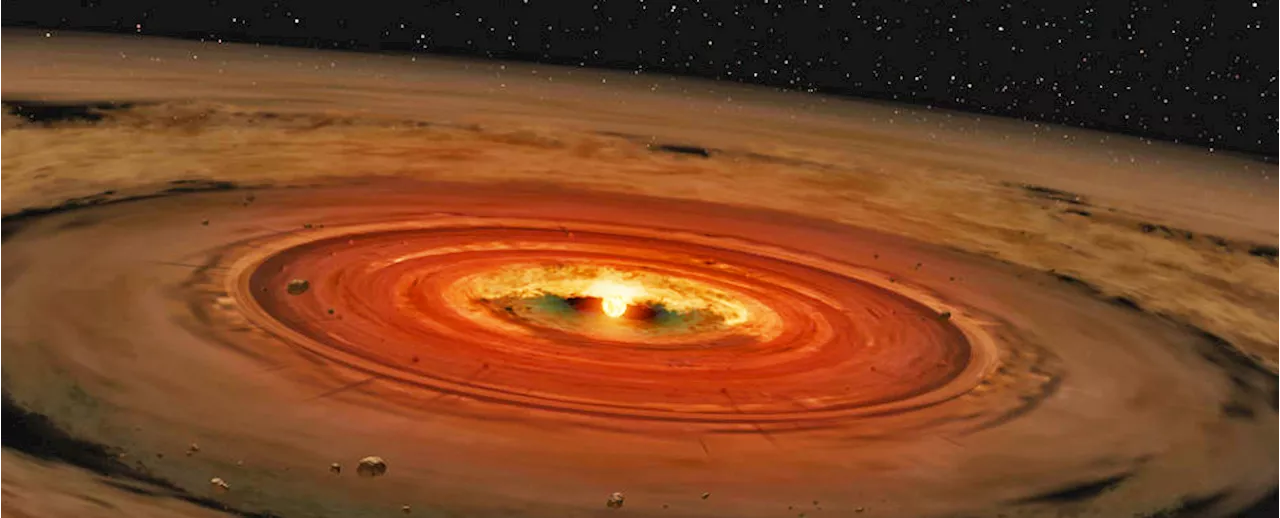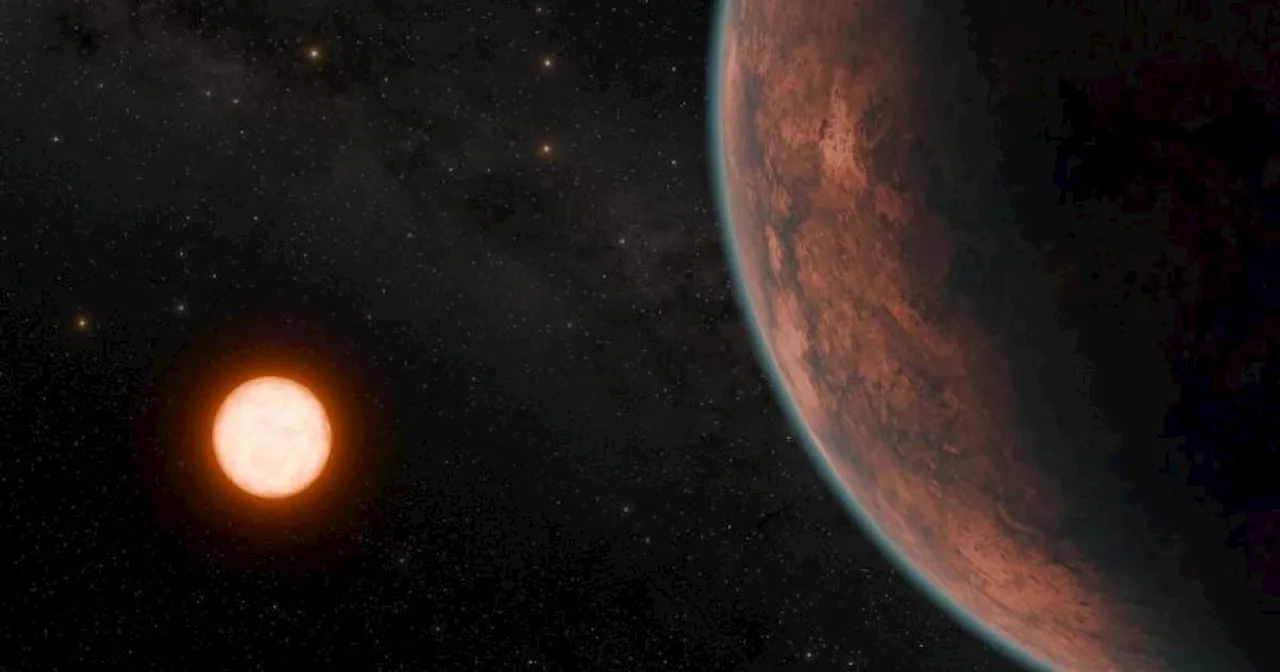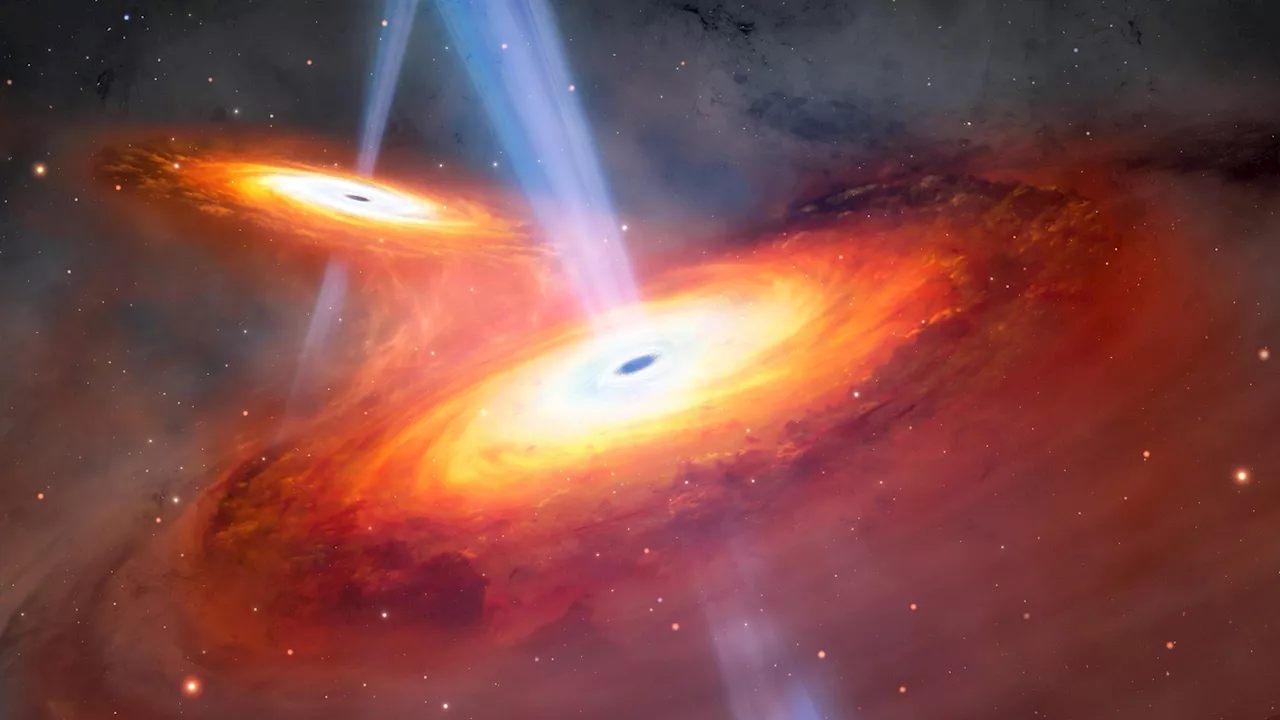Science, Space and Technology News 2024
This illustration depicts two quasars in the process of merging. Using both the Gemini North telescope, one half of the International Gemini Observatory, which is supported in part by the U.S. National Science Foundation and operated by NSF NOIRLab, and the Subaru Telescope, a team of astronomers have discovered a pair of merging quasars seen only 900 million years after the Big Bang.
This period, known as the Cosmic Dawn, is crucial as it marks the beginning of star and galaxy formation which led to the reionization of the universe. These quasars provide insights into the formation of supermassive black holes and the early evolution of galaxies, highlighting a significant cosmological transition during the Epoch of Reionization.the Universe has been expanding.
Although we are not sure exactly when the first stars began to shine, we know that they must have formed sometime after the era of Recombination, when hydrogen and helium atoms formed , and before the oldest-known galaxies existed . The ultraviolet light emitted by the first stars broke down the neutral hydrogen gas filling the universe into hydrogen ions and free electrons, initiating the era of Reionization and the end of the Dark Ages of the universe.
“The statistical properties of quasars in the Epoch of Reionization tell us many things, such as the progress and origin of the reionization, the formation of supermassive black holes during Cosmic Dawn, and the earliest evolution of the quasar host galaxies,” said Yoshiki Matsuoka, an astronomer at Ehime University in Japan and lead author of the paper describing these results, published in theThis image, taken with the Hyper Suprime-Cam on the Subaru Telescope, shows a pair of quasars in the...
Nigeria Latest News, Nigeria Headlines
Similar News:You can also read news stories similar to this one that we have collected from other news sources.
 Astronomers Discover The Largest Planet-Forming Disk We've Ever SeenThe Best in Science News and Amazing Breakthroughs
Astronomers Discover The Largest Planet-Forming Disk We've Ever SeenThe Best in Science News and Amazing Breakthroughs
Read more »
 Astronomers discover an Earth-sized exoplanet orbiting a nearby ultracool dwarf starAn international team of astronomers reports the discovery of a new Earth-sized exoplanet that orbits an ultracool dwarf star located just 54.6 light years away. The newfound alien world, designated SPECULOOS-3 b, is slightly smaller but much hotter than our planet.
Astronomers discover an Earth-sized exoplanet orbiting a nearby ultracool dwarf starAn international team of astronomers reports the discovery of a new Earth-sized exoplanet that orbits an ultracool dwarf star located just 54.6 light years away. The newfound alien world, designated SPECULOOS-3 b, is slightly smaller but much hotter than our planet.
Read more »
 Astronomers discover parallel disks and jets erupting from a pair of young starsMost of the universe is invisible to the human eye. The building blocks of stars are only revealed in wavelengths that are outside of the visible spectrum. Astronomers recently used two very different, and very powerful, telescopes to discover twin disks—and twin parallel jets—erupting from young stars in a multiple star system.
Astronomers discover parallel disks and jets erupting from a pair of young starsMost of the universe is invisible to the human eye. The building blocks of stars are only revealed in wavelengths that are outside of the visible spectrum. Astronomers recently used two very different, and very powerful, telescopes to discover twin disks—and twin parallel jets—erupting from young stars in a multiple star system.
Read more »
 Chinese astronomers discover a high-velocity star ejected from globular cluster Messier 15Chinese astronomers report the discovery of a new high-velocity star about 4,200 light years away. The newfound star, designated J0731+3717, turned out to be ejected from the globular cluster Messier 15 by an intermediate-mass black hole. The finding was presented in a paper published June 3 on the pre-print server arXiv.
Chinese astronomers discover a high-velocity star ejected from globular cluster Messier 15Chinese astronomers report the discovery of a new high-velocity star about 4,200 light years away. The newfound star, designated J0731+3717, turned out to be ejected from the globular cluster Messier 15 by an intermediate-mass black hole. The finding was presented in a paper published June 3 on the pre-print server arXiv.
Read more »
 Astronomers discover rare ‘exo-Venus’ just 40 light-years awayAstronomers have discovered a rare type of planet called an exo-Venus with a similar temperature to Earth, located in our cosmic back yard.
Astronomers discover rare ‘exo-Venus’ just 40 light-years awayAstronomers have discovered a rare type of planet called an exo-Venus with a similar temperature to Earth, located in our cosmic back yard.
Read more »
 Astronomers Discover Habitable World Just 40 Light-Years Away'Thrillingly, this planet is the closest Earth-sized and temperature planet we know,' the researchers say.
Astronomers Discover Habitable World Just 40 Light-Years Away'Thrillingly, this planet is the closest Earth-sized and temperature planet we know,' the researchers say.
Read more »
